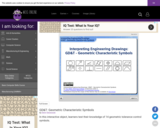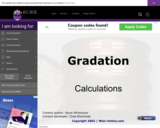
Students view the steps to follow to add complex numbers in Excel.
- Subject:
- Electrical engineering
- Engineering
- Date Added:
- 10/15/2010

Students view the steps to follow to add complex numbers in Excel.

Students view the steps for dividing complex numbers in Excel.

Students view the steps for multiplying complex numbers in Excel.

Students view the steps for subtracting complex numbers in Excel.

Students read how to use the DEGREES() function to convert radians to degrees.

Students read how to use the IMCONJUGATE() function to convert complex numbers to their conjugate in rectangular form.

Learners view the steps for determining the square root of a complex number in Excel.

Learners examine the complex number function to convert real and imaginary coefficients into a complex number.

In this animated learning object, users view the process of entering a formula in an Excel spreadsheet. Several different methods and associated examples are given.

Students read how to lock a cell that is being referenced in a formula so that it does not automatically show an increment when the formula is copied.

Learners read how to convert complex numbers to their polar equivalent in Excel.

The conversion from rectangular to polar mode phase angle in radians is demonstrated in Excel.

Learners read how to create a spreadsheet to determine the voltage drop across a resistor in an AC circuit. The complex functions explained in other learning objects are used in this example.

In this animated object, learners examine the procedure used to determine the types of terminals on a single-pole, double-throw switch.

This objects reviews the Five "S" manufacturing system and helps learners to remember the process.

In this interactive object, learners test their knowledge of 14 geometric tolerance control symbols.

In this interactive object, learners examine geometric characteristic symbols, tolerances, datum feature symbols, and other control frame information. A brief quiz completes the activity.

In this interactive object, learners view various components of gears and read descriptions of them. Learners then identify the location of each of these components in a drag-and-drop exercise.

In this animated object, learners examine the concept of gear ratios. The number of teeth, diameters, and velocity relationships are discussed and calculated using linear ratio equations. A quiz completes the activity.

This learning object introduces the student to the calculations involved in a sieve analysis -- including percentage retained and percentage passed.